Menus
- That broke with tradition
- Engine developed together with Porsche
- Technical data Harley-Davidson V-Rod
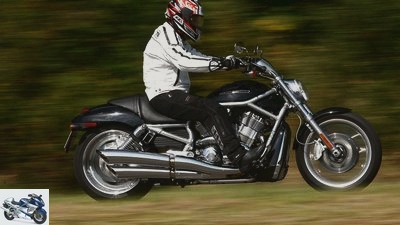
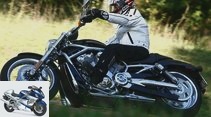
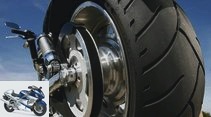
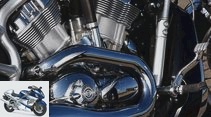
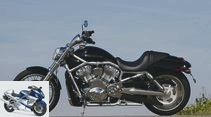
19th photos
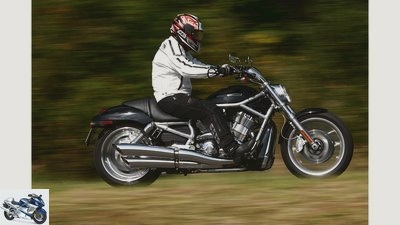
1/19
Harley-Davidson V-Rod.
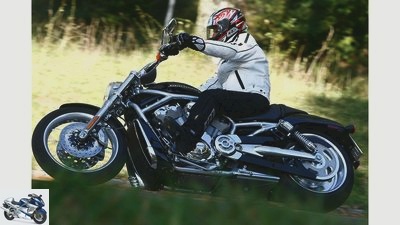
2/19
Harley-Davidson V-Rod.
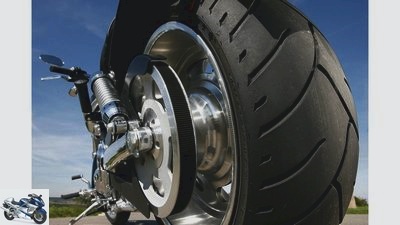
3/19
Harley-Davidson V-Rod.
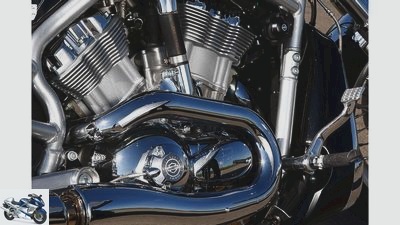
4/19
Harley-Davidson V-Rod.

5/19
Harley-Davidson V-Rod.
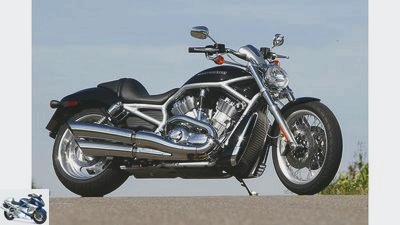
6/19
Harley-Davidson V-Rod.
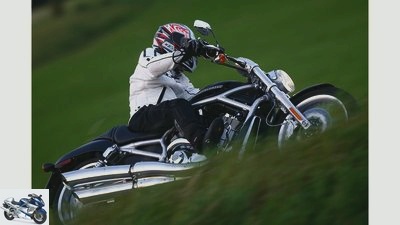
7/19
Harley-Davidson V-Rod.
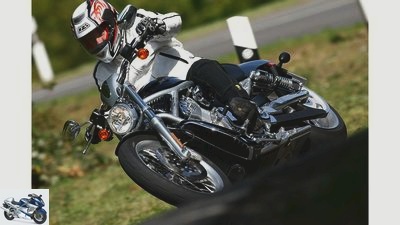
8/19
Harley-Davidson V-Rod.
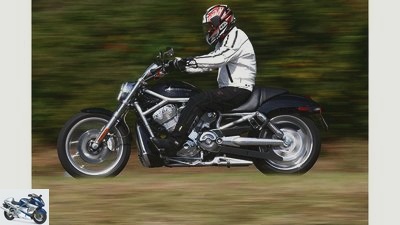
9/19
Harley-Davidson V-Rod.
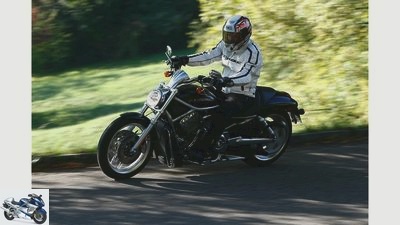
10/19
Harley-Davidson V-Rod.
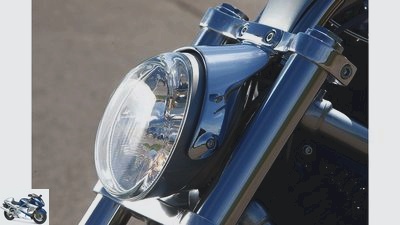
11/19
Harley-Davidson V-Rod.
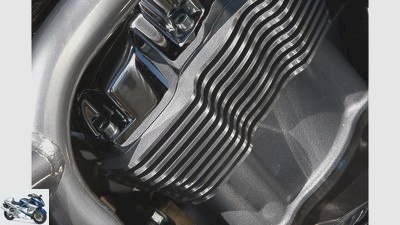
12/19
Harley-Davidson V-Rod.
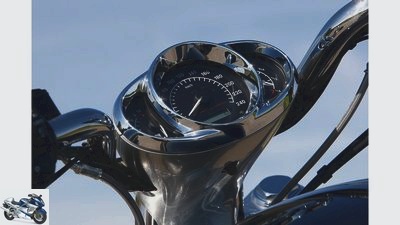
13/19
Harley-Davidson V-Rod.
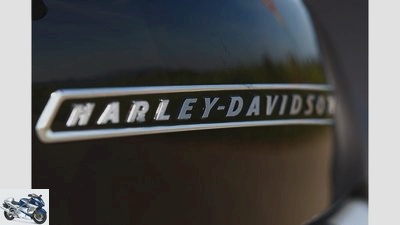
14/19
Harley-Davidson V-Rod.
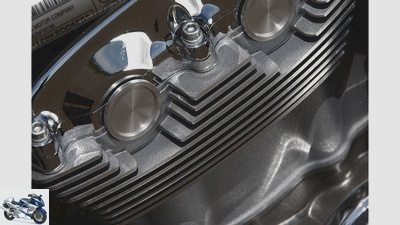
15/19
Harley-Davidson V-Rod.
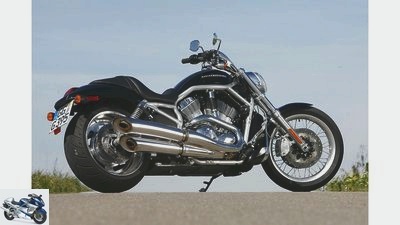
16/19
Harley-Davidson V-Rod.
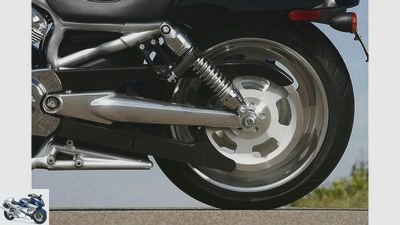
17/19
Harley-Davidson V-Rod.
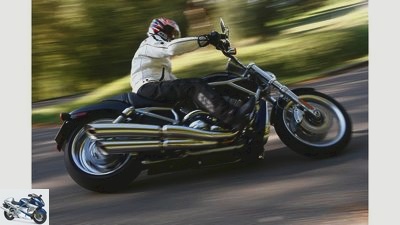
18/19
Harley-Davidson V-Rod.
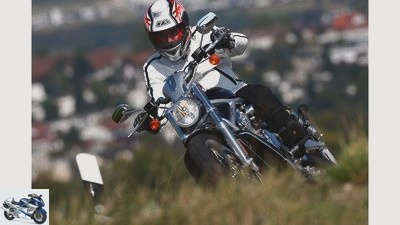
19/19
Harley-Davidson V-Rod.
Euro 3 classic: Harley-Davidson V-Rod
That broke with tradition
The signs are goodbye. Even if Harley has not yet officially commented on it: The V-Rod series will probably disappear.
It was the beginning of a new era at Harley-Davidson: As 2001, the first Harley-Davidson V-Rod appeared, the signs were on performance. This could not be achieved to the desired extent with the shirt-sleeved, air-cooled V2 engines. A new unit was needed, with water cooling. The modern age found its way into Milwaukee, or rather Kansas City, where the V-Rod series rolled off the assembly line. Their engine was based on the works superbike VR 1000 and had – be careful – overhead camshafts that controlled four valves per cylinder. To do this, the pistons in the short-stroke engine covered their work path offset by 60 degrees to one another.
The 45-degree cylinder angle had been strictly established since 1909. So it is hardly surprising that the new engine was christened “Revolution”. From now on everything should be different. No other model series was closer to an active motorcycle in the Harley-Davidson cosmos. A turning ability of up to 9000 revolutions, fat Brembo brakes, a whopping 220 km / h top speed and the sprint to 100 km / h in 3.5 seconds as an easy finger exercise: That was worth a big “wow”. The dragstrip Harley set new standards in the American product portfolio. That was in 2001.
Engine developed together with Porsche
15 years later it looks different. The signs are goodbye. Even if Harley has not yet officially commented on it: The V-Rod series will probably disappear. This is particularly surprising because the company’s most modern engine has all the equipment needed to overcome the Euro 4 hurdle. The reasons are different, probably due to economic efficiency. There is no V-Rod offshoot among the five best-selling models from Harley in January through June 2016. The current Night Rod is only in tenth place internally with 300 units sold this year. The V-Rod series also fell far short of expectations in the US core cruiser market. Too little for the future.
The 1247 cm³ engine developed with Porsche was unique in the American program, just like all V-Rod models themselves. But the clientele did not appreciate that. Harley-Davidson builds old-school engines with bumpers at a 45-degree angle. That is the way it is and it will remain so. The function is secondary, image and tradition count. With that in mind, the market has penalized the Harley-Davidson V-Rod. Nevertheless, we again draw a thick black line with the 240 mm rear tire on the asphalt as a memento. No Harley iron could do that as well as she did.
Technical data Harley-Davidson V-Rod
markus-jahn.com
When the first Harley-Davidson V-Rod appeared in 2001, the signs were pointing to performance.
Technical data Harley-Davidson V-Rod
engine:
- Water-cooled two-cylinder, four-stroke, 60-degree V engine, a balance shaft, two overhead, chain-driven camshafts, four valves per cylinder, bucket tappets, wet sump lubrication, injection, 2 x Ø 53 mm, uncontrolled catalytic converter, 439 W alternator, 12 V battery / 19 Ah, hydraulically operated multi-disc oil bath clutch, five-speed gearbox, toothed belt, secondary ratio 2,400.
- Bore x stroke: 105.0 x 72.0 mm
- Displacement: 1247 cm³
- Compression ratio: 11.5: 1
- Rated output: 89.0 kW (121 hp) at 8250 rpm
- Max. Torque: 115 Nm at 6500 rpm
landing gear:
- Double loop frame made of steel, upside-down fork, Ø 43 mm, two-arm swing arm made of aluminum, two spring struts, adjustable spring base, double disc brake at the front, Ø 300 mm, four-piston fixed calipers, disc brake at the rear, Ø 300 mm, four-piston fixed caliper, ABS.
- Cast aluminum wheels: 3.00 x 19; 8.00 x 18
- Tires: 120/70 ZR 19; 240/40 VR 18
Dimensions + weights:
- Wheelbase 1700 mm, steering head angle 56.0 degrees, caster 141 mm, spring travel front / rear 102/74 mm, seat height * 700 mm, weight with a full tank * 307 kg, load 181 kg, tank capacity / reserve 18.9 / 1.9 liters.
- Guarantee: two years
- Service intervals: 8000 km
- Price: 19,225 euros
- Additional costs: 350 euros
* MOTORCYCLE measurements; 1Model Muscle
Related articles
-
Dream bike Harley-Davidson V-Rod Muscle
12th photos 1/12 Harley-Davidson V-Rod Muscle. 2/12 The beginning of a new era: the V-Rod was and is the…
-
Harley-Davidson V-Rod Muscle test
Artist 12th photos Harley-Davidson 1/12 … equipped with an anti-hopping clutch. Harley-Davidson 2/12 The V-Rod Muscle shows its beautiful rear with…
-
Top test Harley-Davidson VRSCA V-Rod
fact Top test Harley-Davidson VRSCA V-Rod Emotional rescue Words are missing. At least the Germans. Because just at the time when the rest of the…
-
Driving report Harley-Davidson V-Rod Dragster
Driving report Harley-Davidson V-Rod Dragster The screamer 95 decibels, 129 hp, 225 kilograms and an airfield in front of the front wheel. Only flying is…
-
Endurance test Harley-Davidson VRSCA V-Rod
Bilski Endurance test Harley-Davidson VRSCA V-Rod American Express Harley’s newly designed Revolution engine torpedoed the V-Rod over 50,000 miles in two…
-
Ducati XDiavel S, Harley-Davidson V-Rod Muscle and Yamaha Vmax in comparison test
26th photos 1/26 Harley-Davidson V-Rod Muscle, Yamaha Vmax and the new Ducati XDiavel S tested on the drag strip. …
-
Harley-Davidson Heritage Softail Classic and Indian Chief Vintage put to the test
Gargolov 42 photos Gargolov 1/42 Gargolov 2/42 Its two tension struts work hidden under the gearbox, giving the Softail its rigid frame look. So the…
-
Harley-Davidson Road King Classic against Moto Guzzi California 1400 Touring in the test
fact 50 photos fact 1/50 Moto Guzzi California 1400 Touring fact 2/50 Harley-Davidson Road King Classic versus Moto Guzzi California 1400 Touring in…
-
Harley-Davidson Road King Classic old versus new tested
www.bilski-fotografie.de 15th photos bilski-fotografie.de 1/15 Picture gallery: Harley-Davidson Road King Classic old / new. bilski-fotografie.de 2/15…
-
Driving report Harley-Davidson VRSCA V-Rod
Driving report Harley-Davidson VRSCA V-Rod Down, wild The part has a V-Twin, it says Harley-Davidson very small. Oh friends ?? 115 hp, the boulevard…